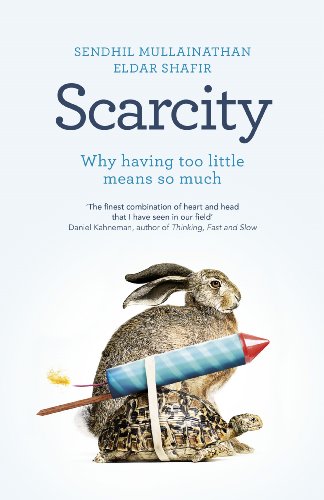The book “Scarcity: Why Having Too Little Means So Much” by Eldar Shafir and Sendhil Mullainathan examines the impact of poverty on the minds and behaviors of individuals. The authors use findings from various scientific fields, including psychology, economics, and sociology, to demonstrate that poverty can disrupt individuals’ cognitive abilities, decision-making, and behavior control.
Here’s a summary of the key ideas in the book:
- Scarcity narrows mental bandwidth: Poor individuals, due to constant concerns about daily issues such as food, housing, and security, have less mental capacity to focus on complex issues and plan for the future.
- Scarcity leads to decision-making bias: Poor individuals, due to psychological pressures arising from poverty, are more exposed to impulsive and short-term decisions that can have negative long-term consequences.
- Scarcity weakens self-control: Poor individuals, due to stress and resource scarcity, have less ability to control their behavior and resist temptations.
- Scarcity breeds hopelessness and lack of motivation: Poor individuals, due to negative experiences and lack of opportunities for progress, are more prone to hopelessness and lack of motivation that can hinder their efforts to escape poverty.
The authors of “Scarcity: Why Having Too Little Means So Much” offer various solutions to counteract the negative effects of poverty on the minds and behaviors of individuals, including:
- Support programs: Such as providing subsidies, cash assistance, and educational and health services to poor individuals.
- Empowerment: Such as providing life skills training and vocational development programs for poor individuals.
- Creating equal opportunities: Such as reducing discrimination and inequality in society.
“Scarcity: Why Having Too Little Means So Much” is an important and influential book that helps to deepen understanding of the challenges faced by poor individuals and offers solutions to address these challenges.
Tips for reading “Scarcity: Why Having Too Little Means So Much”:
- It’s best to read the book step by step and carefully.
- Regularly practice the exercises in the book.
- Seek help from a specialist or counselor if needed.
The book “Scarcity: Why Having Too Little Means So Much” is useful for:
- Individuals seeking a deeper understanding of poverty and its effects on people’s lives.
- Policy makers and planners looking to design and implement effective programs to combat poverty.
- Employees of non-governmental organizations and social activists working with poor individuals.
- Poor individuals looking for solutions to escape poverty.
I hope this summary has been helpful for you.

